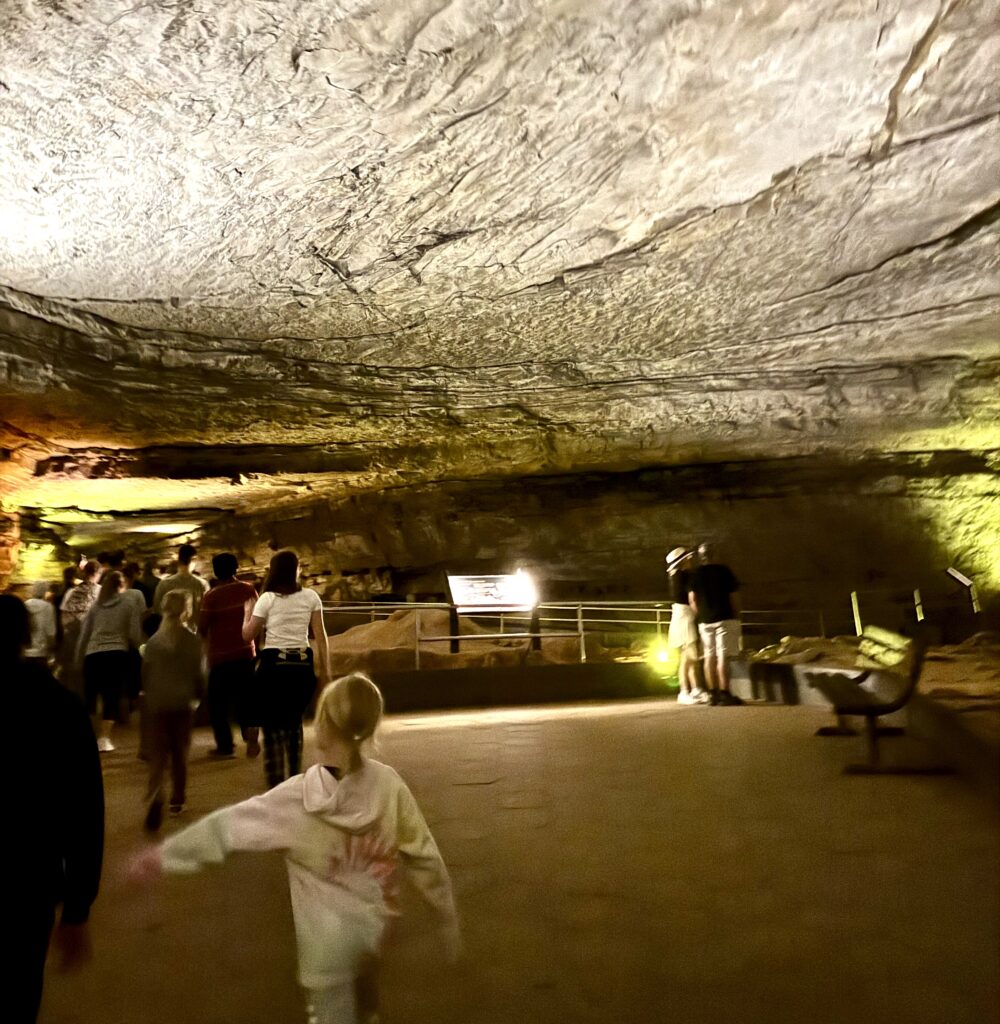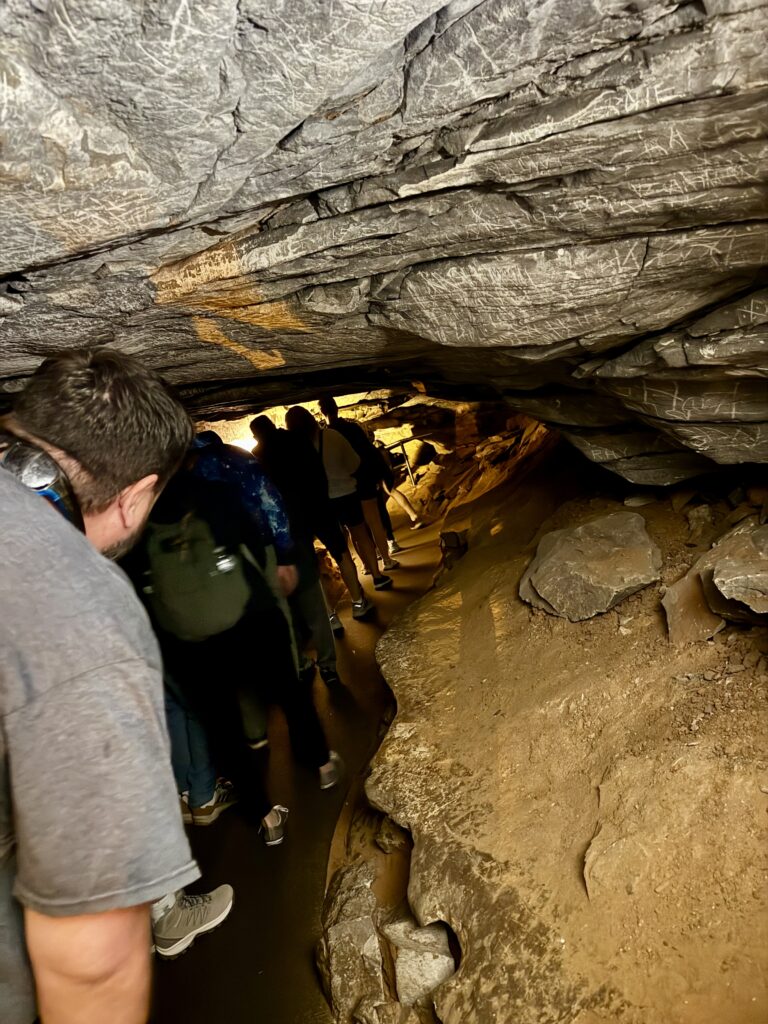
Have you ever seen something so incredible, so improbable, that mere words cannot describe it? Perhaps you have seen the Grand Canyon, sprawled in front of you with those colored rocks and jagged edges, and the sheer size in both depth and distance of the canyon takes your breath away.
Or maybe you’ve stood under the lush waterfalls of Hawaii, falling from 400 feet above you and splashing down into the clearest pool of water that is surrounded by a rainbow of colorful flowers and greenery.
You may have hiked up a volcano and seen the caldera down below, sensing the power that pushed through the ancient mountaintop and yet, even 6,000 years later, steam and smoke continues to rise from the earth below.

Well, I am adding this place to my list of natural wonders that I have had the privilege to experience. I think this marks the 36th National Park we’ve seen, with only 26 more to go!
Mammoth Cave is the largest natural cave system in the world! It is over 400 miles of caverns, tunnels, crevices, and amazing rock formations. The caves were formed by the rushing of water from what is now the Green River. New passages are continually being discovered and explored, new species of animal fossils, like ancient cave sharks, are still being unearthed, and yet the preservation of the work the original cave pioneers of the early 1800’s performed is still a priority for the park Rangers.
Gary and I took just one of a dozen different tours available here, the Historic Tour, which is a two-hour, 2-mile immersion to 300 feet below ground! Our guide, Lucas, was terrific, explaining the long history of the cave with both humor, professionalism, and personality.
There were over a hundred people with us on our tour, each following Lucas down, down, down into the cave, all of us marveling at the limestone formations, low rock ceilings, and narrow passageways. Of course, what goes down must naturally go back up – a metal tower called the Mammoth Dome Tower which is a 190-foot vertical shaft– which then led us through the cave’s main entrance once more.
We ascended and descended for a total of 540 stairs! Some of the passages required you to bend and duck while walking due to the incredibly low height. These passages had interesting names, too – Fat Man’s Misery, Lover’s Leap, Bottomless Pitt, Giant’s Coffin, to name a few.
Once we made it down to the lowest level, some 300 feet below the entrance, of course, we had to make our way back up. Along the way, meandering along the dark corridors, remnants of the past explorers were evident – primitive mining tools and hollowed logs, ancient graffiti from the 1800’s, to felonious carvings of more recent hooligans!

Archeological evidence shows human activity which dates back over 10,000 years ago, and evidence of mining dates back almost 5,000 years ago. The native Americans who have ancestral ties to Mammoth include Cherokee, Chickasaw, and Shawnee Nations. They all had different names for the cave and used it for various ceremonial purposes. The cave originally got its current name in the 1800’s when the miners, most of whom were enslaved workers, experienced the massive passages. Original mining then was for the saltpeter (potassium nitrate) to use for gunpowder during the War of 1812. Later, they mined for gypsum.
Our National Park system is truly extraordinary. Yellowstone was the first in the world to be designated a national park. Our country sets the bar high for other countries to follow. These designated areas remain pristine, natural, and are continuing to adapt to the modern world. They provide a natural landscape to hike, bike, walk, explore, climb, swim, and learn in. They provide a natural habitat for thousands of animals, some unique to only that park and nowhere else in the world. These National Parks ensure that future generations will have the privilege to explore these beautiful and vast wildernesses and learn about our natural world.
Mammoth Cave National Park also is unique in that it has earned five separate designations – it is an International Night Sky Park, a Biosphere Region, a UNESCO World Heritage Site, a National Water Trail, and of course, a National Park since 1941.
So, the next time you see a sinkhole, perhaps you might just find a new cave entrance lurking a few hundred feet below you!

